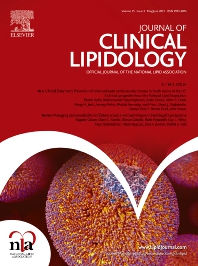Comparison between European and Iranian cutoff points of triglyceride/high-density lipoprotein cholesterol concentrations in predicting cardiovascular disease outcomes
Authors
Affiliations
Abstract
Background: High triglyceride (TG) and low high-density lipoprotein cholesterol (HDL-C) are important cardiovascular risk factors. The exact prognostic value of the TG/HDL-C ratio, a marker for cardiovascular events, is currently unknown among Iranians so this study sought to determine the optimal cutoff point for the TG/HDL-C ratio in predicting cardiovascular disease events in the Iranian population.
Method: The Isfahan Cohort Study (ICS) is an ongoing, longitudinal, population-based study that was originally conducted on adults aged ≥ 35 years, living in urban and rural areas of three districts in central Iran. After 10 years of follow-up, 5431 participants were re-evaluated using a standard protocol similar to the one used for baseline. At both measurements, participants underwent medical interviews, physical examinations, and fasting blood measurements. “High-risk” subjects were defined by the discrimination power of indices, which were assessed using receiver operating characteristic (ROC) analysis; the optimal cutoff point value for each index was then derived.
Results: The mean age of the participants was 50.7 ± 11.6 years. The TG/HDL-C ratio, at a threshold of 3.68, was used to screen for cardiovascular events among the study population. Subjects were divided into two groups (“low” and “high” risk) according to the TG/HDL-C concentration ratio at baseline. A slightly higher number of high-risk individuals were identified using the European cutoff points of 63.7% in comparison with the ICS cutoff points of 49.5%. The unadjusted hazard ratio (HR) was greatest in high-risk individuals identified by the ICS cutoff points (HR = 1.54, 95% CI [1.33-1.79]) vs European cutoff points (HR = 1.38, 95% [1.17-1.63]). There were no remarkable changes after adjusting for differences in sex and age (HR = 1.58, 95% CI [1.36-1.84] vs HR = 1.44, 95% CI [1.22-1.71]) for the ICS and European cutoff points, respectively.
Conclusion: The threshold of TG/HDL ≥ 3.68 is the optimal cutoff point for predicting cardiovascular events in Iranian individuals.
Keywords: Cardiovascular disease; Event; HDL-C; Ratio; Triglyceride.
How to Cite
. Jan-Feb 2016;10(1):143-9. doi: 10.1016/j.jacl.2015.10.008. PMID: 26892131.

